I'm an artist at heart, performer and songwriter, and a lover of all things creatively & artistically beautiful. In this little corner of the internet, we talk about how to live an artistic lifestyle, fit with the tools, techniques, tips, and community. Get comfy and cozy.
BACK TO THE BLOG
How to Be in Touch with Your Intuition (Without Overthinking)
filed under:
December 14, 2024
created on:
That song you’re working on? Your intuition knows exactly what it needs.
That creative decision you’ve been agonizing over for weeks? Deep down, you already have the answer.
Your inner wisdom is trying to tell you something, sweet friend — but if you’re like most artists, you might be drowning it out with endless Google searches, constant second-guessing, and the deafening noise of “shoulds.”
Learning how to be in touch with your intuition is about quieting the overthinking mind that’s keeping you stuck in analysis paralysis so you can better flow in your art.
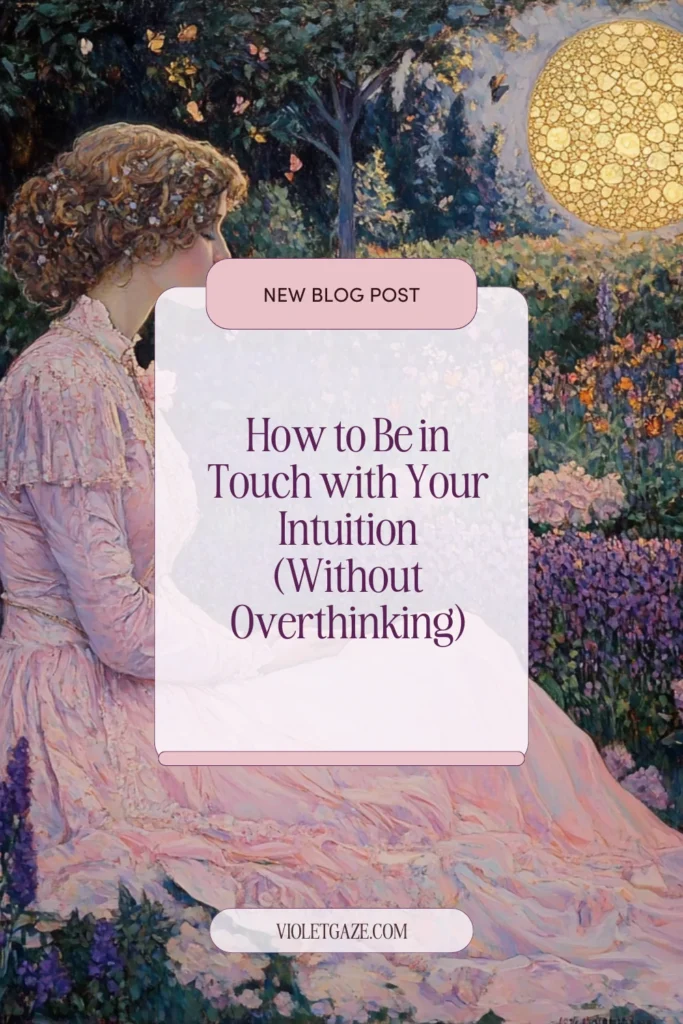
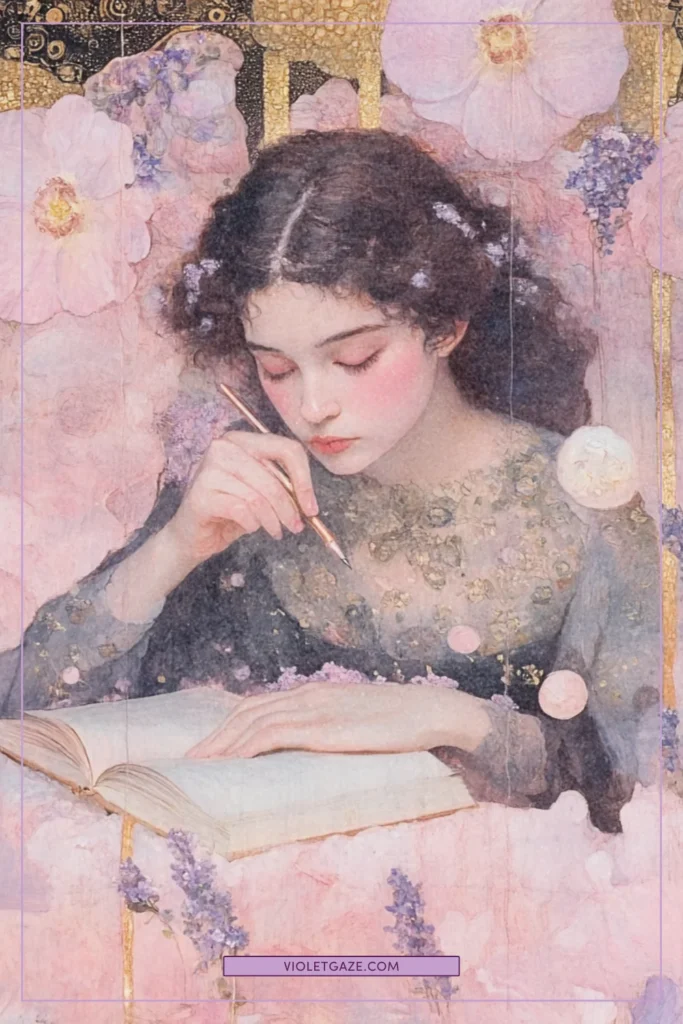
Every groundbreaking artist knows how to listen to that quiet inner voice that whispers “yes, this is right” — even when logic and convention screamed otherwise.
Let’s explore how to strengthen gut feelings and develop intuitive abilities, so you can create from a place of deep knowing rather than endless doubt.
After all, your most powerful creative guide isn’t out there in the world. It’s right there inside you, patiently waiting to be heard.

How to Be in Touch with Your Intuition (Without Overthinking)
Learning how to be more in touch with your intuition is a journey. While we’re usually born with a strong sense of intuition (children are so smart!), somewhere along the way, many of us lose that magical connection to our inner knowing.
Think about it: as children, we instinctively knew when something felt right or wrong. We could sense the energy of a room, know exactly what we wanted to create, and weren’t afraid to follow those gut feelings.
But then life happened. Logic, rational thinking, and others’ opinions started drowning out that quiet, wise voice within. Now, as artists, we often find ourselves second-guessing every creative decision, wondering if we’re “doing it right,” and getting trapped in endless cycles of overthinking.
It’s time to reclaim that natural connection to your intuition. Let’s explore how to nurture this sacred relationship without letting your analytical mind take over the entire conversation.
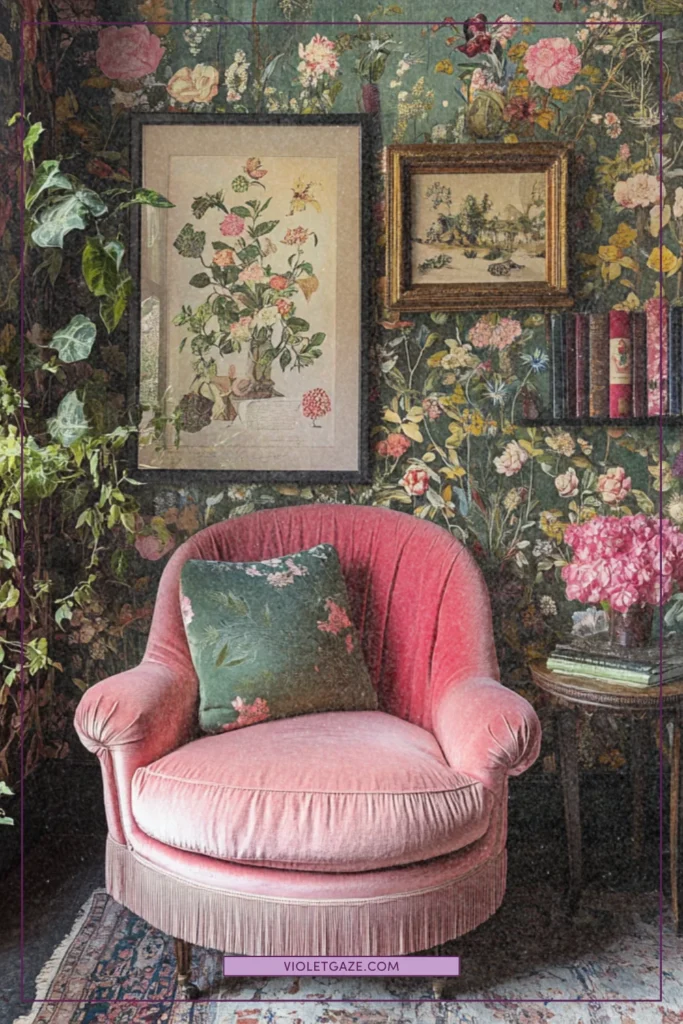
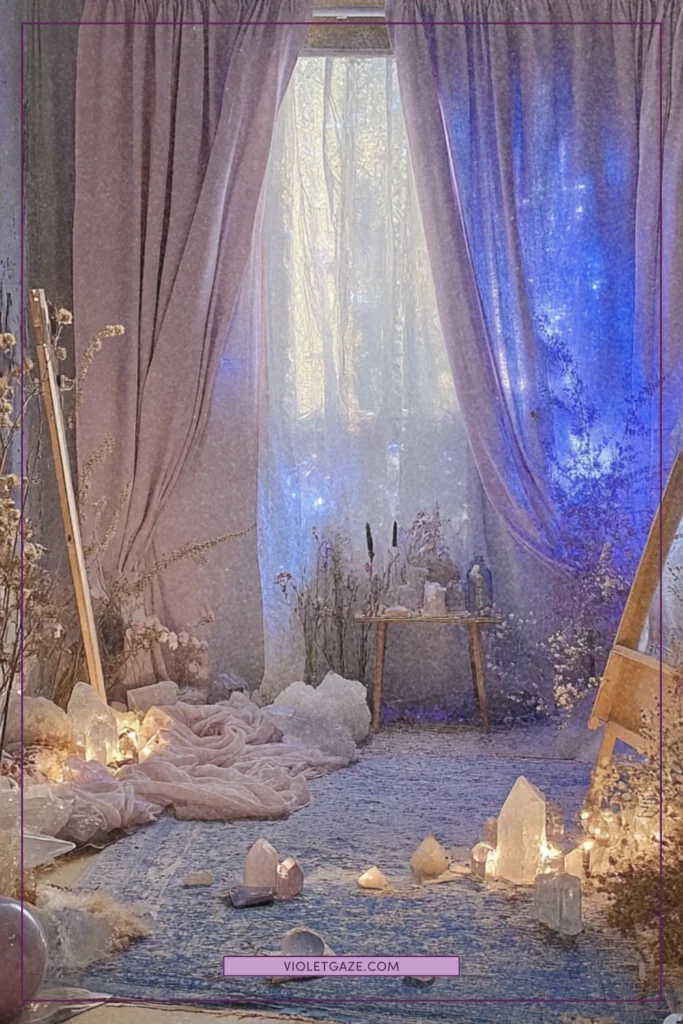
Understanding Your Creative Intuition
Your creative intuition is like your artistic North Star.
It’s that deep knowing that guides you toward authentic expression. Learning how to be in touch with your intuition isn’t just about “going with your gut” (though that’s a big part of it) but developing a profound trust in your creative wisdom that goes beyond simple instinct.
This inner guidance system has been with you since you first felt the urge to create, and it’s patiently waiting to be heard.
Think of your intuition as your artistic best friend who:
- Always tells you the truth (even when it’s hard to hear)
- Knows what you need before you do
- Guides you toward authentic expression
- Protects you from forcing creativity that isn’t aligned
The Difference Between Intuition and Fear
One of the trickiest parts of developing intuitive abilities is learning to distinguish them from fear.
When I first started writing music, I would often mistake my fear of vulnerability for “intuitive hesitation” about sharing my work. It took time to understand that fear felt constricting and anxious, while true intuition carried a sense of calm certainty, even when pointing toward challenging paths.
The signs of intuitive guidance speak with a quiet confidence that doesn’t need to justify itself. It feels expansive, like taking a deep breath of fresh air.
Your intuition guides you toward or away from something, coming from a place of present-moment clarity rather than future-focused anxiety.
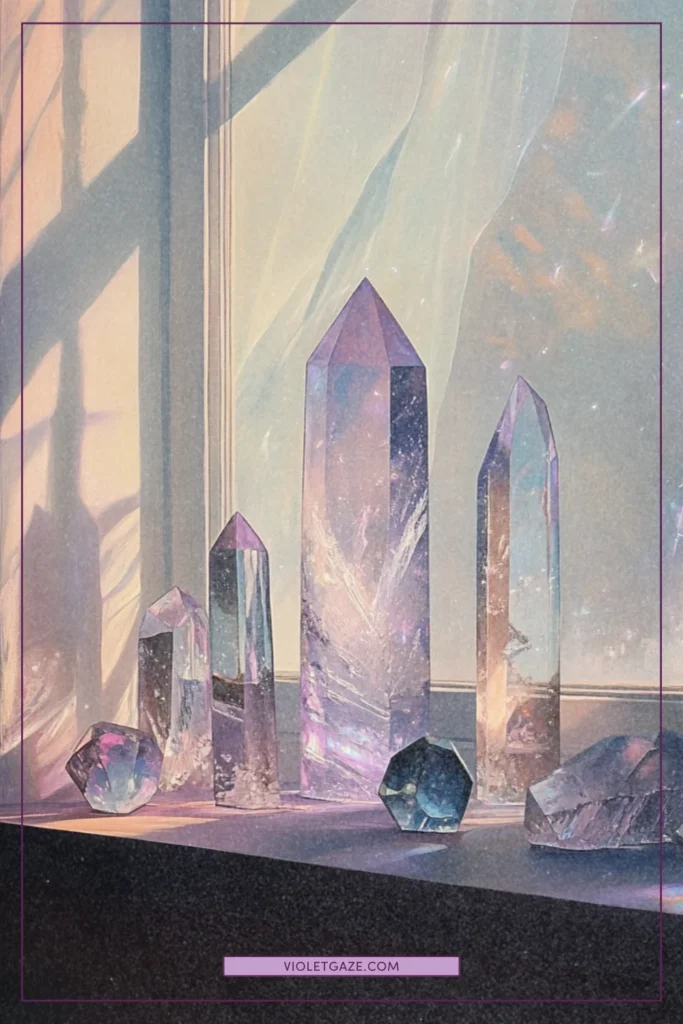
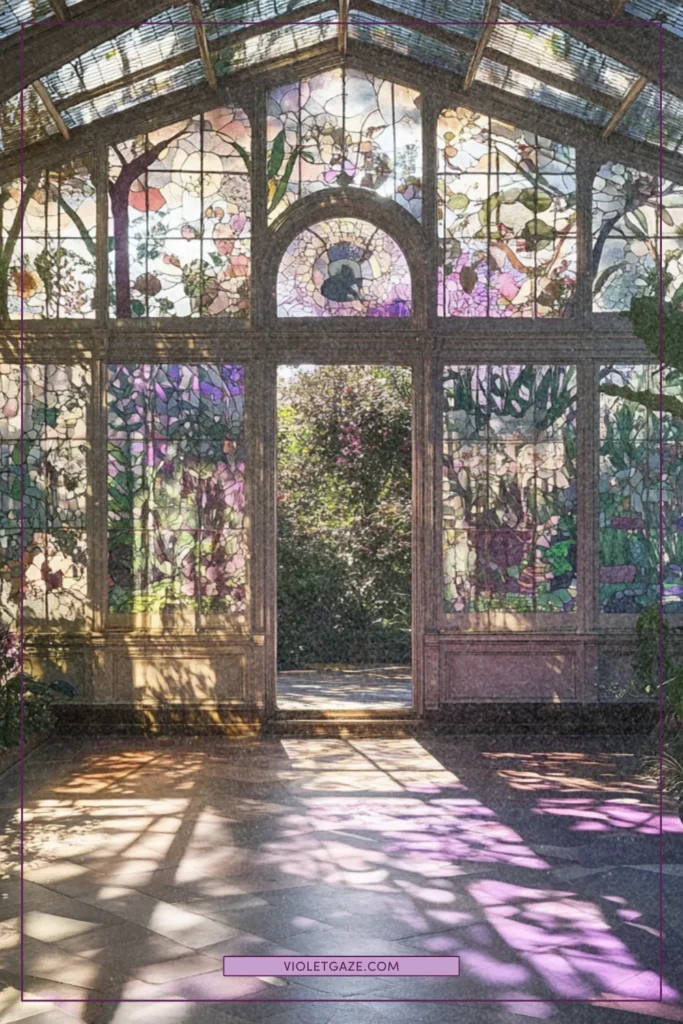
Why Artists Need Strong Intuition
Your intuition is your most powerful creative ally in a world that often tries to put art into neat, marketable boxes.
As you develop intuitive abilities, you can navigate the complex landscape of creative expression while staying true to your authentic voice.
When you’re deeply connected to and trust your inner voice, you can make choices that align with your artistic vision, even when they don’t make “logical” sense to others.
Each day at The William Esper Studio, there were moments during my acting exercises that things would just *click.* I wasn’t thinking about technique or what others expected – I was purely following that quiet knowing inside. My acting teacher, Jennifer, would say that we were the most present when we didn’t remember our performance.
And I have to say, those performances became more and more common. I wasn’t “watching” myself. I started trusting that as long as I did my homework, I could trust in my intuitive voice and ability to be moment-to-moment and serve the exercise, not myself.
Signs You’re Disconnected from Your Inner Voice
Sometimes, the first step to being more in touch with your intuition is recognizing when you’ve lost connection with it. The signs of intuitive guidance become muffled when you’re…
- Constantly seeking external validation
- Your creative decisions feel heavy
- Your creative flow feels blocked
- Your body is sending signals
- Your creative joy is dimming
- You find yourself stuck in analysis paralysis
- You have difficulty distinguishing between your authentic voice and external influences
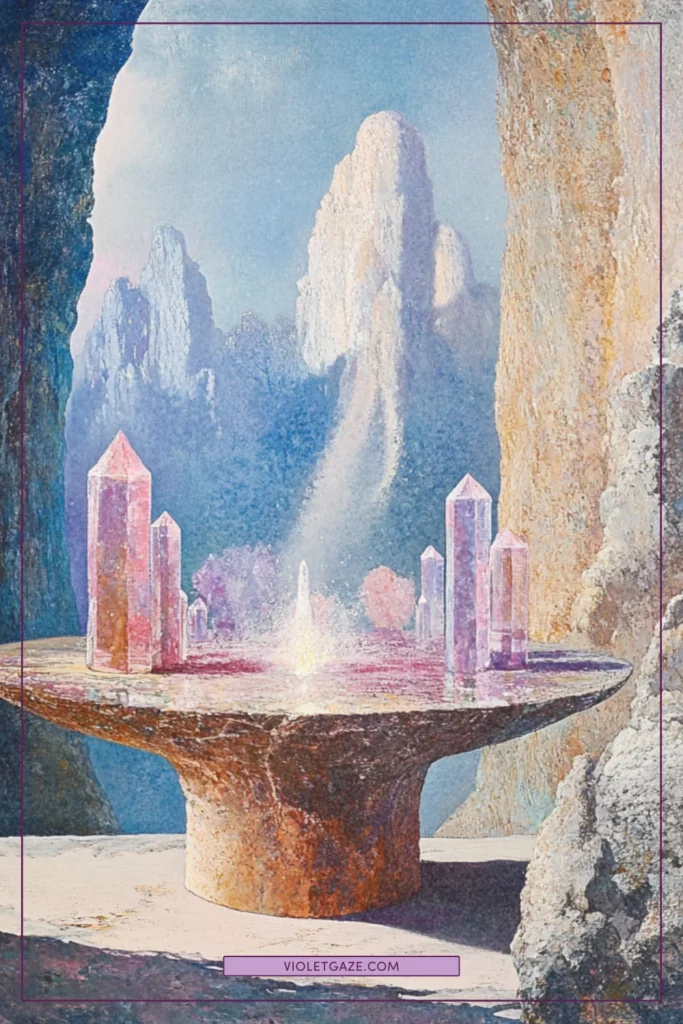
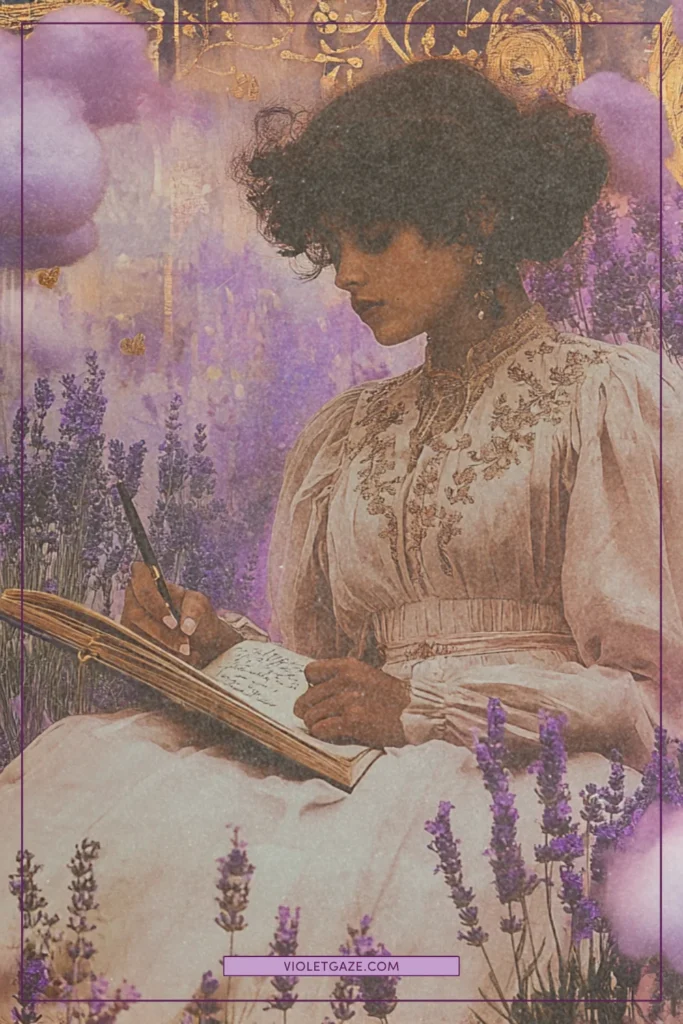
Pay attention to how you feel when creating. Are you flowing naturally from one choice to the next, or does every decision feel heavy with doubt? Do you find yourself creating mainly to please others rather than because something within you needs to be expressed?

Common Blocks to Artistic Intuition
Before we can strengthen gut feelings, we need to understand what’s blocking them. Think of this as lovingly tending to the soil where your creativity grows.
The Overthinking Trap
It’s that spiral where every creative decision becomes a complex web of analysis. You might find yourself spending hours researching color theory instead of actually painting, or reading countless books about songwriting instead of sitting down with your guitar.
This analytical paralysis is actually blocking your natural creative flow. When you listen to your intuition, it speaks in symbols, signs, feelings, not in pros-and-cons lists. When you’re caught in overthinking, you’re essentially trying to logic your way through something that’s meant to be felt.
It’s like trying to explain why a sunset is beautiful – the more you analyze it, the further you get from its simple truth!
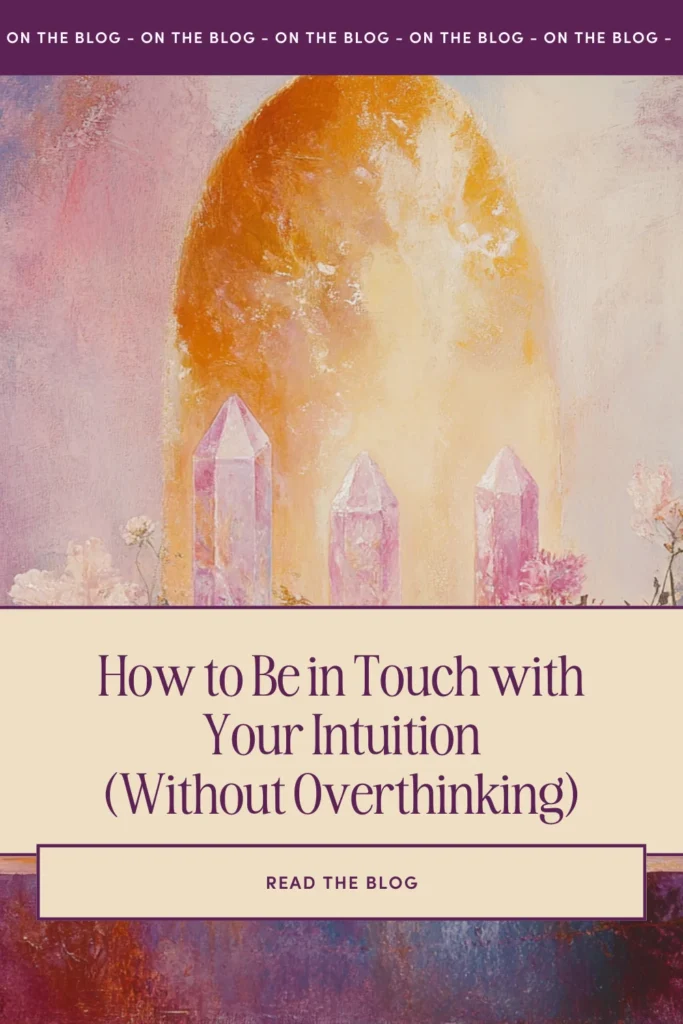
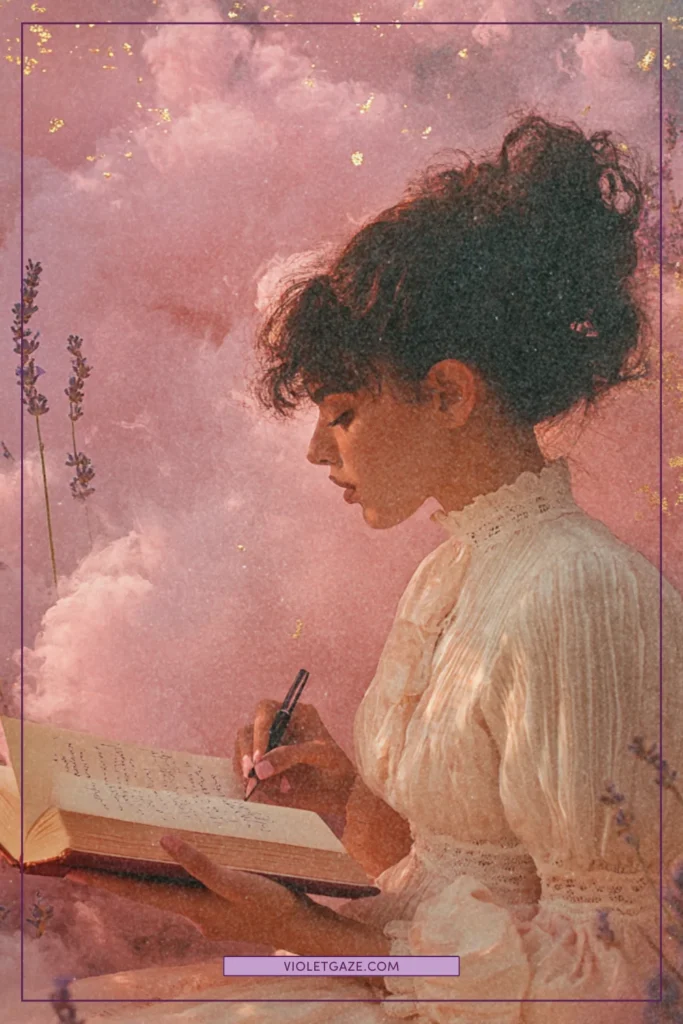
External Noise & Expectations
We live in a world that’s constantly telling us how to create.
Social media algorithms push certain styles, well-meaning family and friends share their opinions, and industry “experts” preach about what sells. Learning how to be more in touch with your intuition can be so challenging when there’s so much external noise!
The tricky part is that some of this external input can be valuable – but only when filtered through your intuitive wisdom.
Those who trust their inner voice can discern which advice resonates with their authentic path and which is just noise.
Fear of Making “Wrong” Choices
This might be the biggest block to developing intuitive abilities — the fear that trusting your intuition will lead you astray.
The magical truth is that in art, there are no truly wrong choices – only stepping stones to finding your voice! Every “mistake” is actually an opportunity to deepen your understanding of your creative path.
It can be nerve-wracking releasing your first piece of art. I felt super nervous starting my blog. What if I change niches? What if people see me change niches?
Change niches. Dare to evolve. Your audience will eat it up.
When you finally started to listen to your intuition, that quiet inner voice urging you to blend styles, you’ll find your niche/genre/brand — of you.
Your fear of making wrong choices might be keeping you from your most powerful work.

Practical Ways to Strengthen Your Creative Intuition
Now let’s explore some intuition exercises to strengthen your connection with your inner wisdom; gentle practices for your intuitive muscle.
AM Artistic Brain Dumps
Before the world rushes in with its demands and distractions, take time to strengthen gut feelings through simple practices. This could be through Julia Cameron‘s morning pages practice – three pages of unfiltered writing – or through quick “brain dumps” to bypass your analytical mind.
You want to do this practices before your inner critic fully wakes up. It’s catching your ideas before they fade and before the overwhelm hits. In fact, the signs of intuitive guidance are often clearest in these early moments.
Don’t judge what comes out; simply let it flow. Sometimes your most profound insights will appear in what seems like random musings. And nobody’s going to see it anyway!
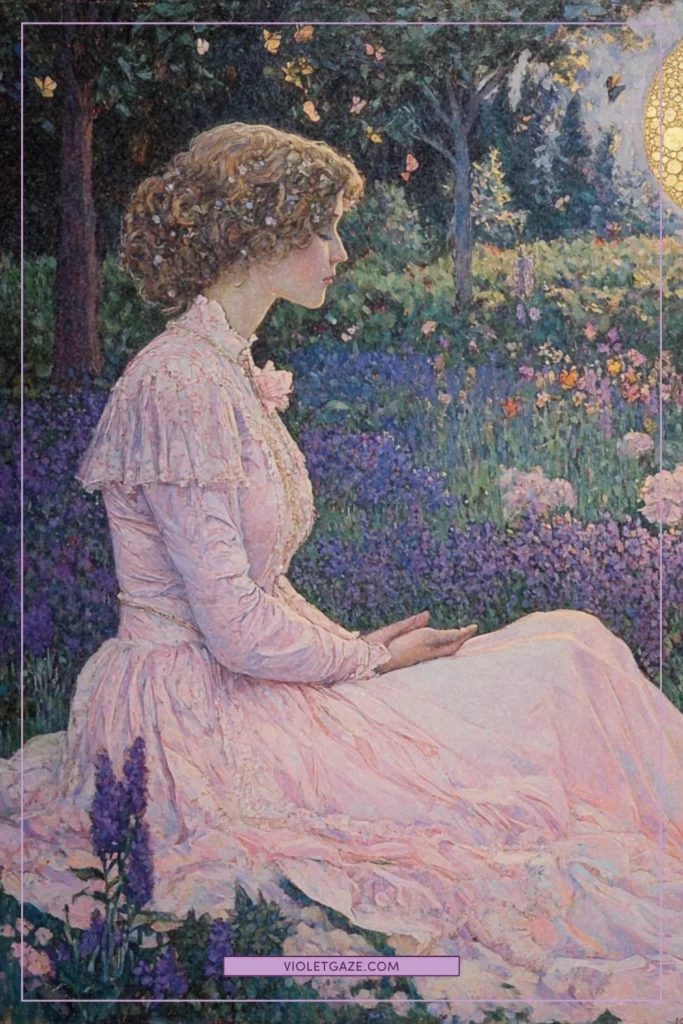
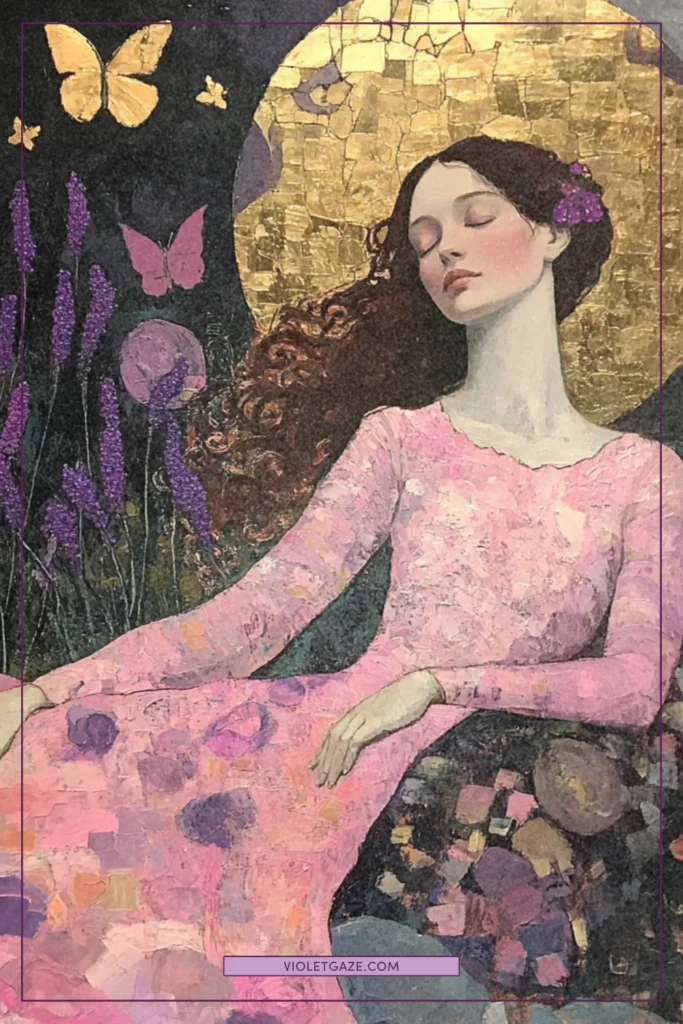
Creating Sacred Space for Inspiration
Your environment profoundly affects your ability to listen to your intuition.
You need to carve out a corner of your world where your artistic soul can breathe freely. Your cozy nest for your inner wisdom to flourish.
When you honor your creative space, you send a signal to your intuitive guidance that you’re ready to receive it. Even something as simple as lighting a candle before you begin can become a powerful ritual that helps you transition into a more intuitive state.
On a deeper level, it’s getting deep with your home and going through the entire Marie Kondo process, getting rid of all the clutter and things in your home that don’t spark joy for you.

Body-Mind Connection Practices
Your intuition often speaks through your body first.
In our modern, head-focused world, we can forget that wisdom lives in our body Mindfulness meditation and intuition work beautifully together, helping you recognize the subtle ways your body communicates wisdom.
Movement doesn’t have to be complicated! It could be gentle stretching while watching TV. Taking a slow walk in the mornings. Going to the gym and feeling the buzz and energy of everyone around you as you focus on your own goals.
Using Your Intuition in Your Creative Practice
Now let’s bring all of this beautiful theory into your actual creative work. Because understanding how to be in touch with your intuition is one thing. Actively using it in your artistic practice is where the magic really happens.
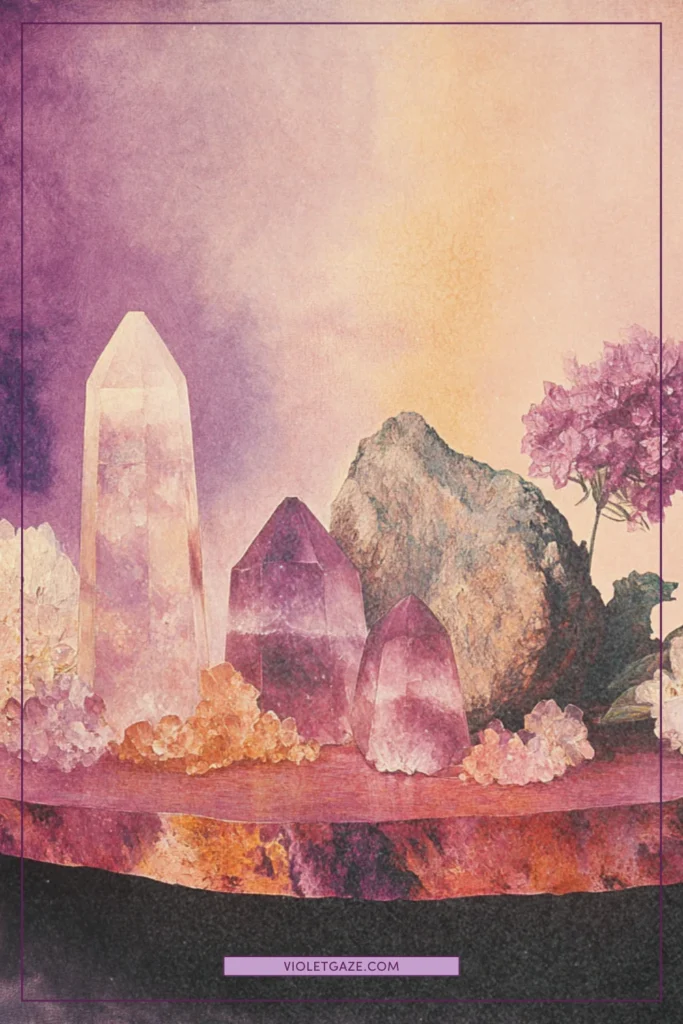
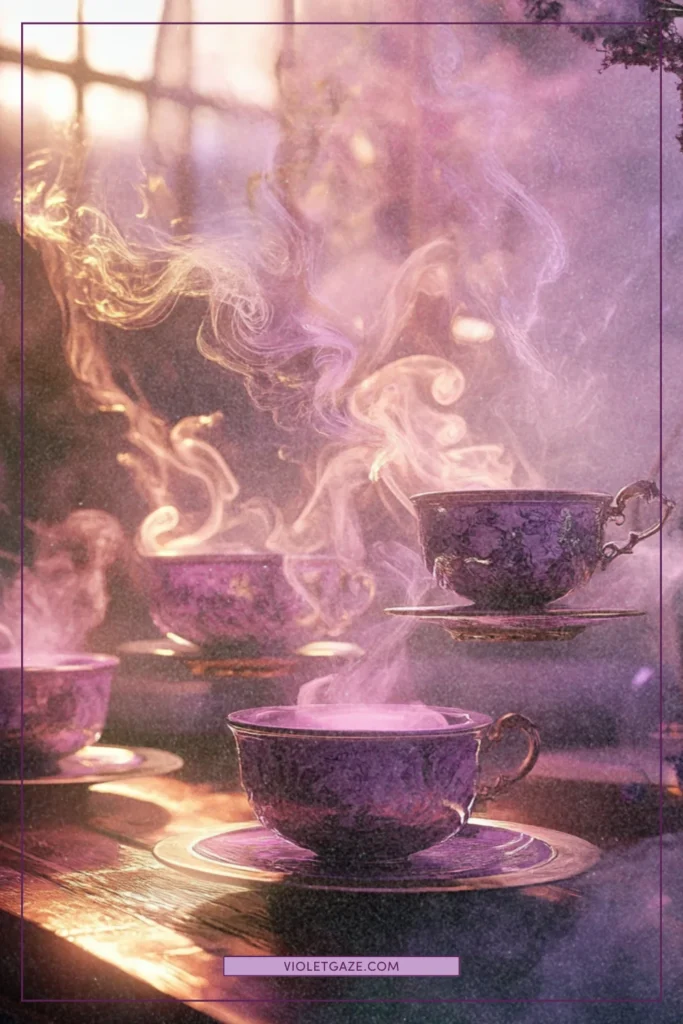
Asking Your Body Directly How It Feels
When facing a creative choice, try developing intuitive abilities by tuning into your body’s signals first. Literally say your idea out loud, and your body will respond accordingly.
A practice I love is to stand tall and lean back and forth until you feel like your feet are perfectly even on the floor. Say your idea out loud, and your body will either lean forward (meaning to pursue it) and backwards (meaning to wait off).
You also feel your body responding through feeling butterflies (a similar feeling to Marie Kondo’s sparking joy).
Your body often knows the truth about your before your mind catches up.
Knowing That Every Creative Process is a Snowflake
Your creative process is as unique as your fingerprint, and the signs of intuitive guidance know the rhythm that’s right for you. Some artists work best in short, intense bursts; others need long, meandering exploration.
Some create best at midnight; others flourish at dawn. Learning to listen to your intuition can guide you to your natural creative rhythm.
If all the productivity gurus say to work in the mornings but you only feel inspired after 5pm, then work after 5pm. Feel what your body is asking for.
Trust that your inner wisdom knows your optimal creative conditions.
Let’s Honor Your Inner Wisdom Together!
Want to explore more ways to nurture your creative spirit? Join our community of heart-centered artists who are learning to trust their inner voice. Subscribe on YouTube for weekly inspiration and gentle reminders that your intuitive creative path is perfectly, magically yours.
Let’s continue this beautiful journey together, one intuitive step at a time.
Paragraph
Paragraph
Creative lifestyle
Creative lifestyle
Creative lifestyle
Paragraph
Xo, Kira Violet
I'm an artist at heart, performer and songwriter, and a lover of all things creatively & artistically beautiful. In this little corner of the internet, we talk about how to live an artistic lifestyle, fit with the tools, techniques, tips, and community. Get comfy and cozy.
BACK TO THE BLOG
I'll pass you little notes full of my latest musings, tips & fav creative tools for being your best artist.










